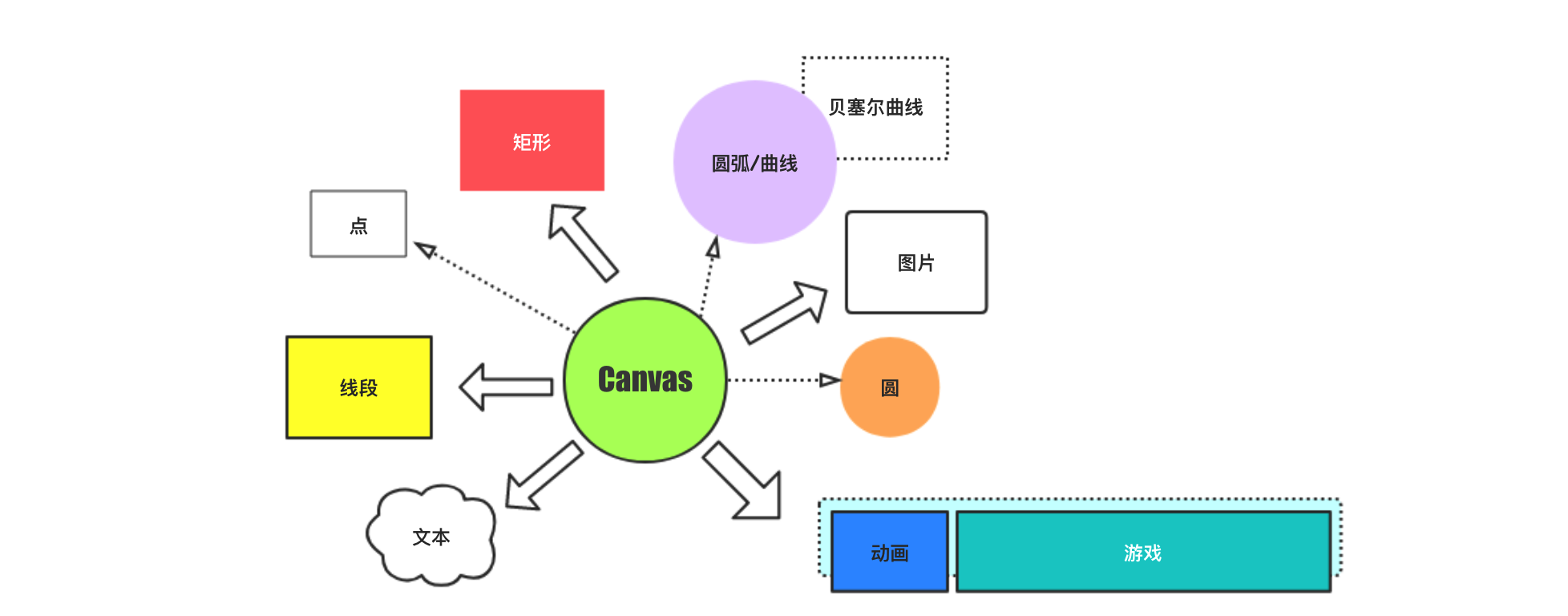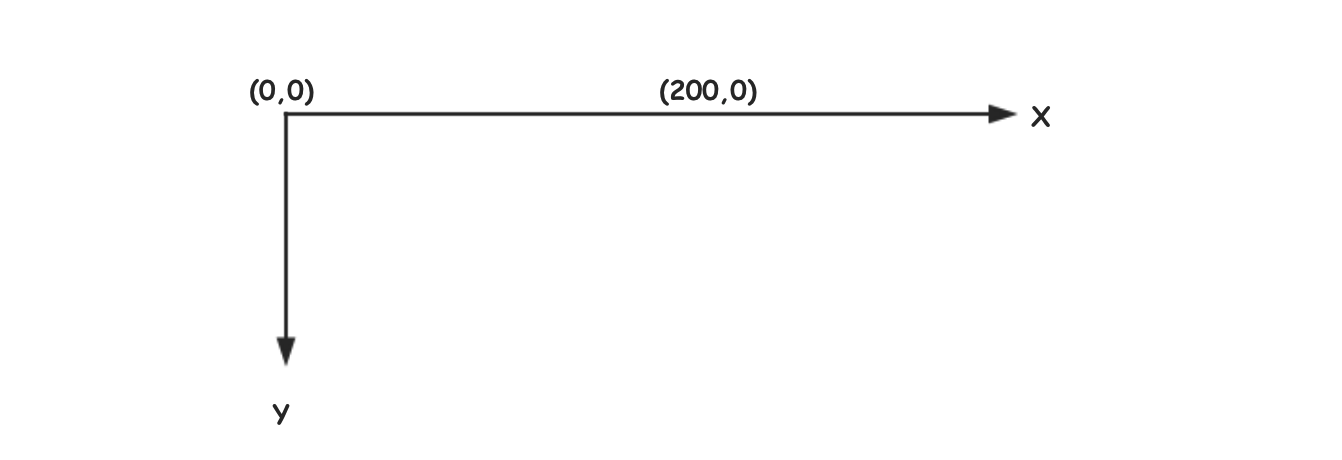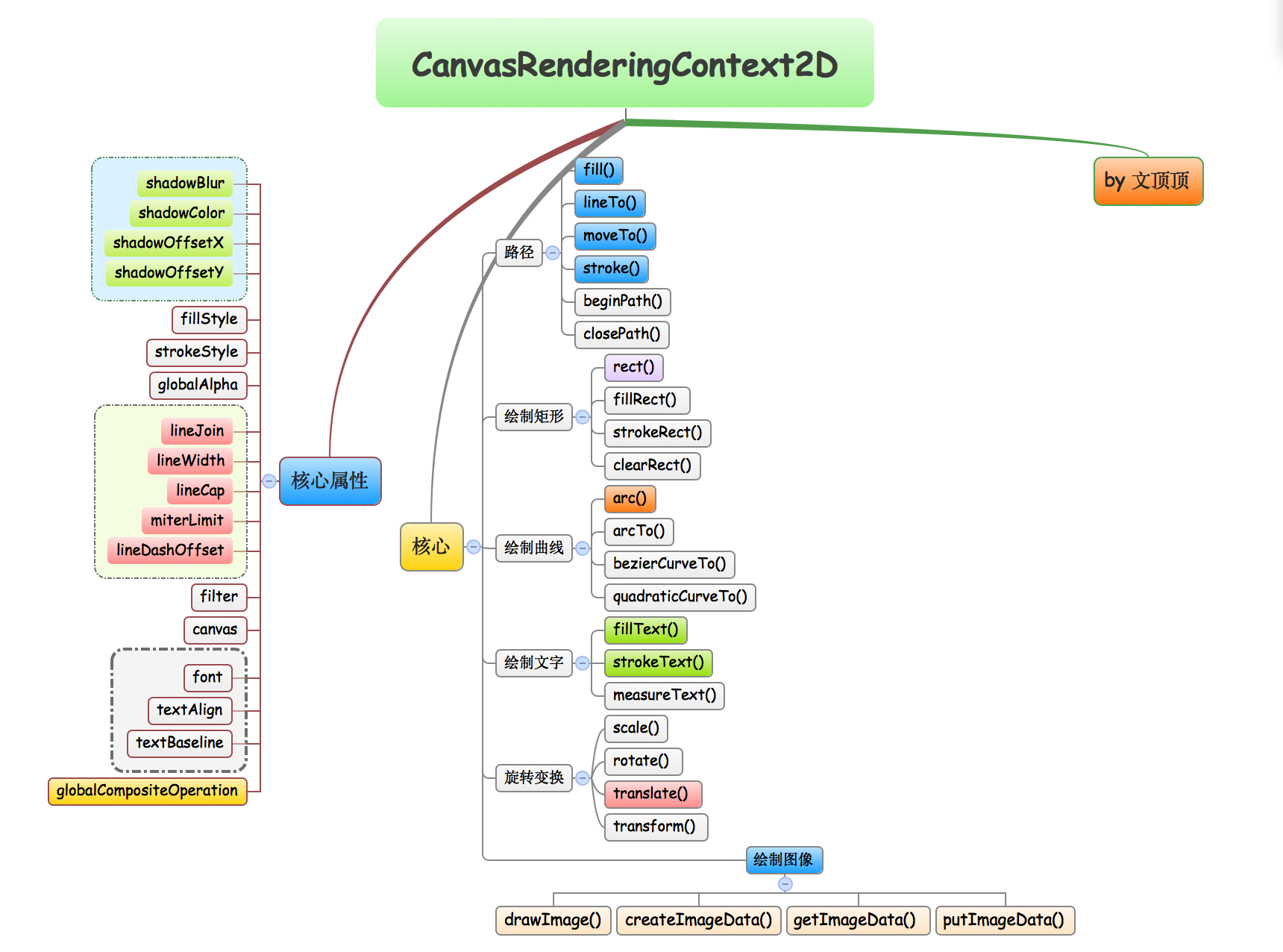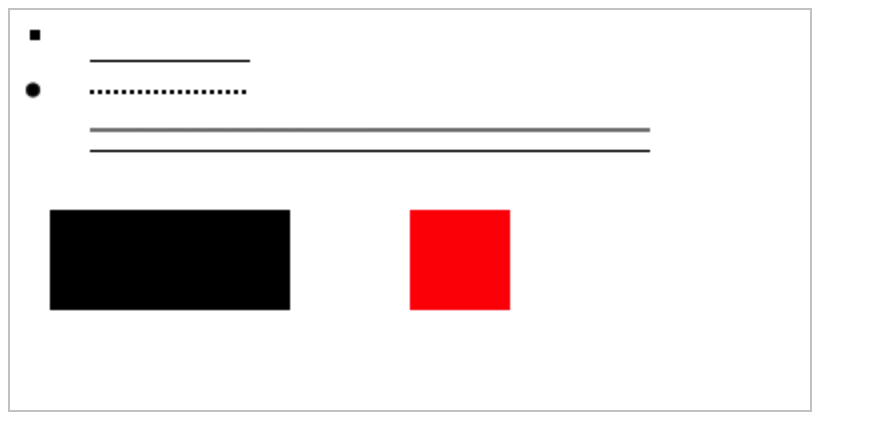Brief introduction to Canvas

Canvas Is a new tag provided by HTML5.
<canvas id="canvas" width="400" height="300"></canvas>
Canvas It is a rectangular canvas. On the canvas, we can control each pixel through javaScript to draw graphics.
Canvas Tags use javaScript to draw images on Web pages, which itself does not have drawing function. By using canvas and calling related API s, you can draw paths, rectangles, circles, characters and images in a variety of ways.
The first extension [Canvas] () was introduced into the WebKit kernel by the 'Apple' company for the 'Mac OSX' Dashboard, and later implemented in Safari and Google Chrome. [Canvas] () tag is the content of 'WhatWG Web applications 1.0 specification', which is also included in HTML5.
Application fields and trends
① Cool scene show: realize dynamic advertising effect with Canvas, and can run cross platform harmoniously.
② Data visualization: various statistical charts (trend chart, pie chart, line chart, etc.) have a mature open source framework.
③ In the field of game development: Canvas is the first choice for HTML5 game development. It is more three-dimensional and exquisite than Flash in terms of Web-based images.
[1] Web graphics editor: Photoshop graphics editor will be able to be 100% web-based.
[2] Remote visual control: Canvas can better realize Web-based data transmission to gous visual control interface.
[3] Various types of simulators: in terms of visual effects and core functions, simulators can be completely implemented by JavaScript.
reference material W3school , MDN_Canvas_API
HTML Canvas 2D Context
Canvas By default, the label has a width of 300 * 150, which can be viewed by setting the border.
Canvas The label supports the operation of right mouse button · (copy picture) · and (save picture as), which is consistent with the picture.

Canvas The reference coordinate system of the label is shown in the figure above, and the direction of its Y axis is different from the common mathematical coordinate system.
Canvas The browser compatibility of the tag is very good (IE9 +). If the browser is not compatible, it is recommended to set a friendly prompt for the tag content.
Canvas The label itself can't draw graphics, it's just a Canvas. The specific drawing work is mainly completed by the Canvas context object.
Canvas Label context object is the interface for javaScript to operate Canvas. The common type is CanvasRenderingContext2D.
Canvas When setting the canvas width and height of the label, it is recommended to implement it directly through the width and height attribute nodes in the label.
<canvas id="canvas" width="400px" height="300px">The current browser does not support canvas,Please upgrade your browser</canvas>
<script>
//01 get canvas
var canvas = document.getElementById("canvas");
//02 get canvas context object
var ctx = canvas.getContext("2d");
//03 setting path
//Open path (can be omitted)
ctx.beginPath();
//Sets the start point of the path
ctx.moveTo(20,50);
//Set path corresponding value
ctx.lineTo(100,50);
//Set line (stroke) color
ctx.strokeStyle = "red";
//04 draw line (stroke)
ctx.stroke();
</script>
Code description the code above will draw a red line on the canvas.
Note: please do not use 'CSS' to control the width and height of the [Canvas] () label, which will cause the internal picture to stretch and deform. If you reset the width and height attribute of the [Canvas] () label, all existing contents in the Canvas will be erased.
Basic use of Canvas

Almost all the core members of the canvas renderingcontext2d prototype object are listed here for reference.
canvas //Current canvas object
filter //Set filtering effects such as blur and grayscale
globalAlpha //Set transparency (0 ~ 1)
shadowBlur //The blur level of the shadow
shadowColor //The color of the shadow
shadowOffsetX //The horizontal distance of the shadow from the shape
shadowOffsetY //The vertical distance of the shadow from the shape
fillStyle //Sets the style (color) of the rectangular fill
strokeStyle //Set stroke style
lineCap //Type of line end round but (default) square
lineJoin //Inflection point type of intersection line round miter (default) bevel
lineWidth //Sets the width of the line
miterLimit //Maximum miter length (the distance between the inner and outer corners of the intersection of two lines)
lineDashOffset //Set dashed line offset
font //Set font drawing parameters (font size, font, bold, etc.)
textAlign //Sets the horizontal alignment of text
textBaseline //Set text baseline (vertical alignment)
globalCompositeOperation //Sets how to draw a source (New) image onto a target (old) image
imageSmoothingEnabled //Set whether the picture is smooth (unstable)
imageSmoothingQuality //Set the attribute of image smoothness (unstable)
moveTo() //Set path (starting point)
lineTo() //set up path
beginPath() //Open path
closePath() //Close path
setLineDash() //Set dashed line width data
getLineDash() //Gets the collection of dashed line widths
rect() //draw rectangle
fillRect() //Rectangle fill
strokeRect() //Set stroke (rectangle)
clearRect() //Erase rectangular area content
stroke() //Set stroke
fill() //Set fill
clip() //Cuts an area of the specified shape and size
arc() //Draw an arc (circle)
arcTo() //draw a curve
ellipse() //Add elliptical path (unstable)
bezierCurveTo() //Draw Bezier curve (3)
quadraticCurveTo() //Draw Bezier curve (2)
isPointInPath() //Checks whether a point is in the specified path
isPointInStroke() //Check whether a point is within the specified (range)
createLinearGradient() //Create a linear gradient
createRadialGradient() //Creates a radial / circular gradient
fillText() //Rectangle fill (draw text)
strokeText() //Set stroke (text drawing)
measureText() //Gets and calculates the text width
drawImage() //Draw picture
createImageData() //Create a new ImageData object
getImageData() //Get ImageData object (pixel data of rectangular area)
putImageData() //Place the image on the canvas from the specified ImageData object
createPattern() //Repeats the specified element in the specified direction
drawFocusIfNeeded() //Draw the focus if necessary
save() //Save status
scale() //Set zoom
rotate() //Set rotation
restore() //Returns previously saved path States and properties
translate() //Pan (remap (0,0) position on canvas)
transform() //Replace the current conversion matrix of the drawing
setTransform() //Reset the current transformation to the identity matrix, and then run transform()
resetTransform() //Resets the current deformation (unstable) using the identity matrix
The canvas context CanvasRenderingContext2D object provides rich interfaces for drawing graphics. We can directly call relevant API s to draw paths, arcs, rectangles and other patterns. In addition, there are many ways to get the target pattern. There is not only one way to Rome, but all complex patterns are inseparable from points, lines and surfaces, and they should be gradual.
Here, first provide a 400 * 300 canvas in the page to obtain the context object of the canvas.
<canvas id="canvas" width="400px" height="200px"></canvas>
var ctx = document.getElementById("canvas").getContext("2d");
Drawing of rectangular and circular points
ctx.fillRect(10,10,5,5); //Rectangular point
ctx.arc(11.5,40,3,0,2 * Math.PI); //Circular point ctx.fill(); //Set fill
Drawing of lines
//Method (1) draw lines by drawing continuous rectangles
//Example: (solid line)
for(var i = 0 ; i < 80 ; i++)
{
ctx.fillRect(40 + (i * 1),25,1,1);
}
//Example: (dotted line)
for(var i = 0 ; i < 20 ; i++)
{
ctx.fillRect(40 + (i * 4),40,2,2);
}
/*********************************************/
//Mode (2) draw lines by path
//Example: (chroma diluted line)
ctx.moveTo(40,60);
ctx.lineTo(320,60);
//Example: (lines with normal chromaticity)
ctx.moveTo(40,70.5);
ctx.lineTo(320,70.5);
//Set stroke
ctx.stroke();
Drawing of faces (rectangles)
//Method (1) draw a rectangle in the way of "rectangular point" + cycle
for(var i = 0 ; i < 40 ; i++)
{
ctx.fillRect(20 + (i * 3),100,3,50);
}
//Method (2) draw rectangle directly
ctx.fillStyle = "red";
ctx.fillRect(200,100,50,50);
The result diagram of the above code running is posted here.

Note: when drawing lines in canvas context, we will find that the final color of the lines does not look black, which feels lighter. In addition, the width of the lines does not look '1px' but '2px'. In fact, the main reason is that when canvas is drawing, the aligned point is the center of the line, so the line will be divided into two 0.5px up and down, which will be supplemented when displaying, so its chromaticity is naturally unsaturated. When drawing, you can consider setting an offset of '0.5px' for the drawing coordinates.